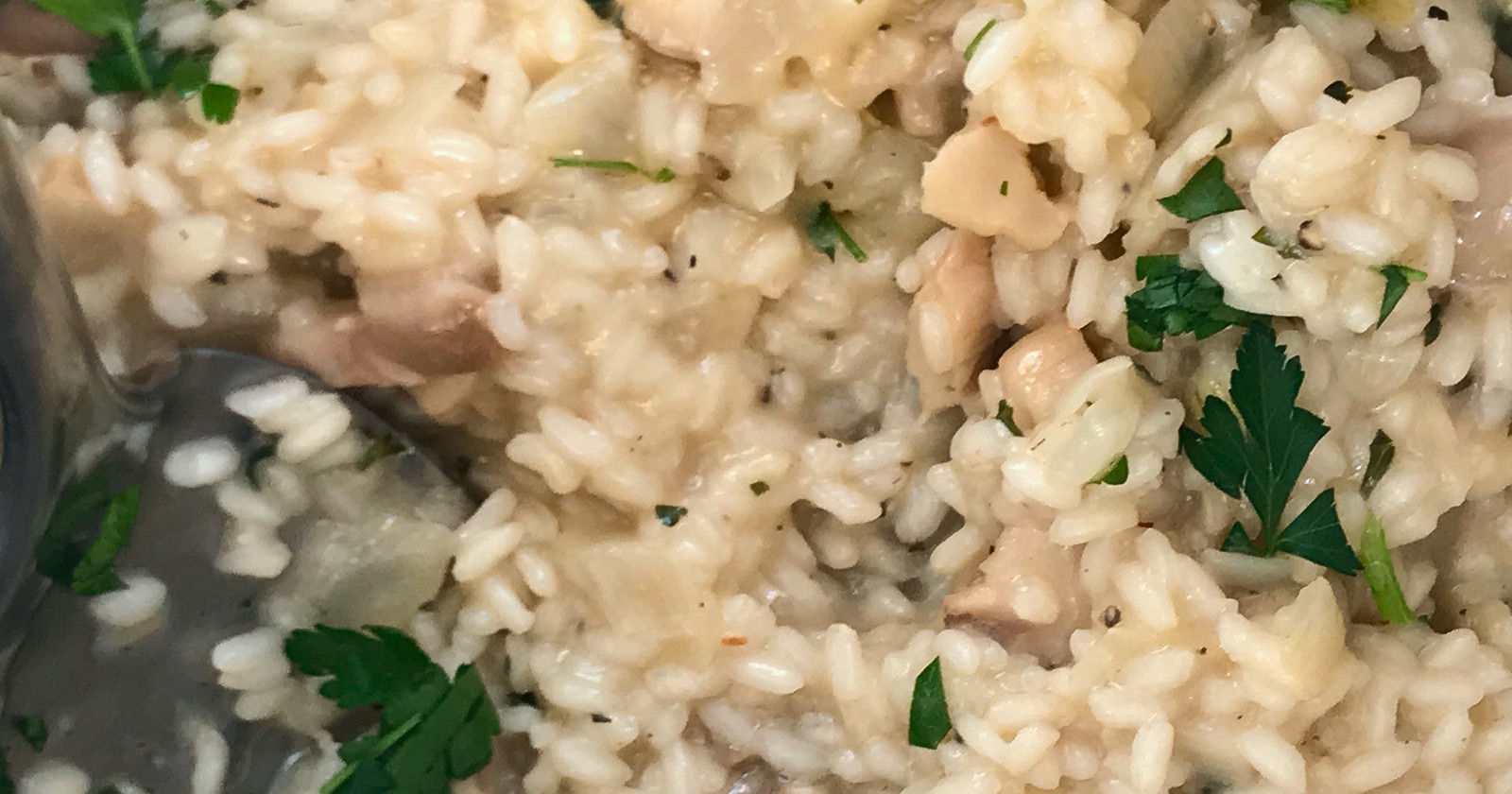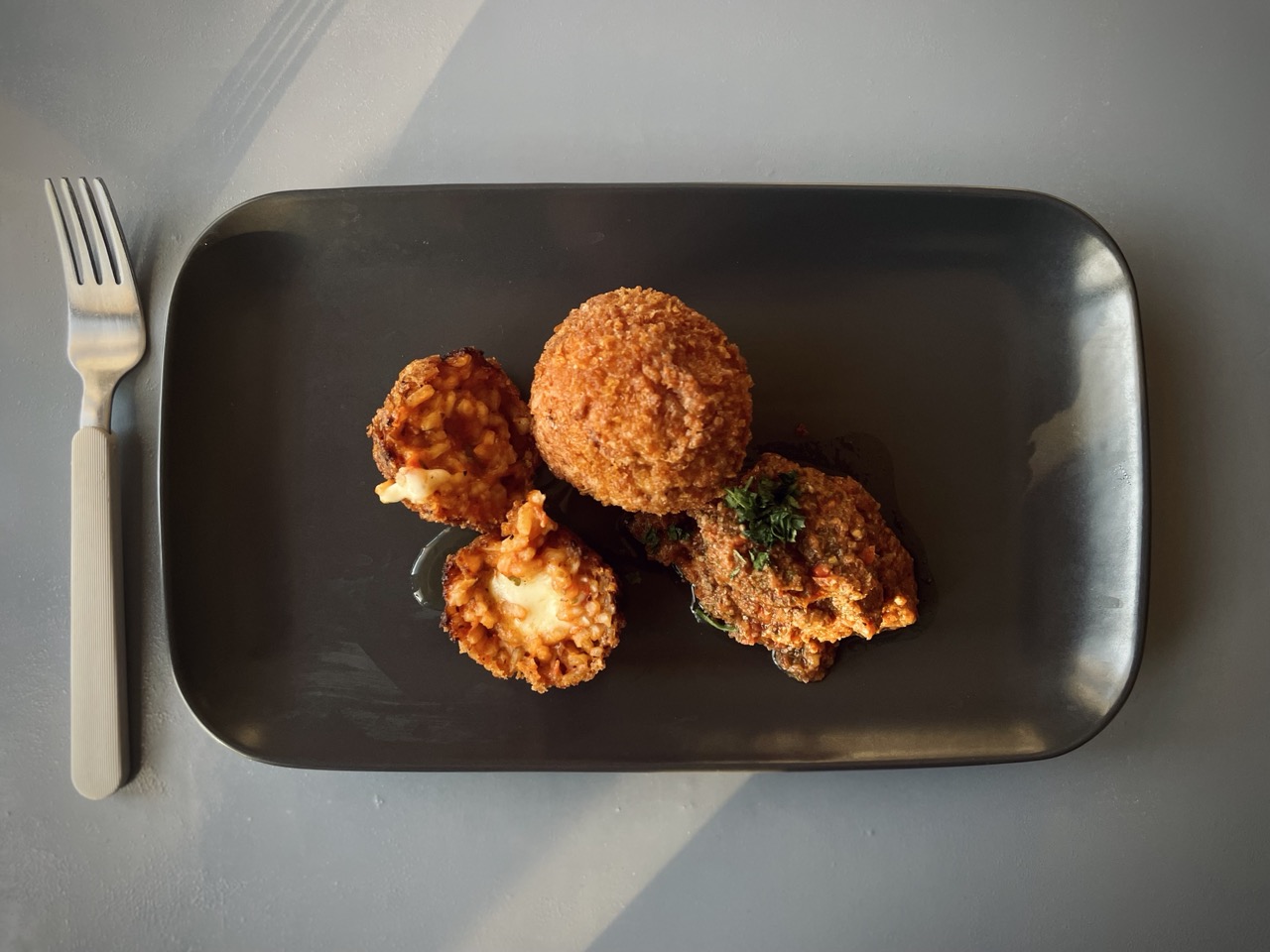

Everything I Know About Risotto
I’ve made risotto more times than I’ve made mistakes in my life, and that’s saying something, because I have loved poorly and worn corduroy in summer. I’ve made risotto for two, for twenty, for one sad, glorious dinner alone when I needed to feed my stomach and my self-worth.
I’ve made it in a tiny kitchen. I’ve made it in rental houses, in friends’ kitchens, in places where you had to stir with a chopstick because the spoon was mysteriously decorative. Risotto has been the centerpiece of birthdays and breakups, first dates that became love stories and third dates that became fond anecdotes. I once made a lemon-parmesan risotto while talking myself through a panic attack, and we both calmed down by the time the rice hit al dente. There’s something about that slow, meditative stirring, something that just feels like the universe reminding you: not everything needs to be fast to be good.
Restaurants rarely get it right. Not because they can’t cook, but because they insist on using risotto as a side dish, which is the culinary equivalent of asking Dua Lipa to hum in the background while you do karaoke. They pre-cook it. They blast it. They scoop it next to a steak like an afterthought. Risotto isn’t an accessory. It’s a diva. A diva you must woo. It doesn’t perform under pressure. It needs attention, affection, a touch of wine, and your full heart. You can’t rush it. It punishes distraction with gumminess. You can’t microwave your way to a risotto, any more than you can speed-date your way into a lifelong friendship. And that’s why I love it. Because it asks something of you. Because it gives something back.
And then, like a beautiful surprise at the end of a beautiful week, it gives again. Because day-old risotto becomes arancini. Tiny, golden miracles. Little crunchy spheres of heaven, each one holding the ghost of meals past. It’s the food version of reincarnation. It’s leftovers as legacy. Risotto never just feeds you once. It sticks around. It becomes something else. It says: we’re not done here. There’s more love to give.
Risotto is for when you have time and when you don’t. For when your fridge is empty except for stock and your soul is empty except for the faint hope that things can feel warm again. It’s good with mushrooms. It’s good with peas. It’s good with lemon zest and mint, with that strange cheese your favorite person brought you from Italy. It’s good with almost everything. I haven’t tried it with gummy bears but I’m not ruling it out. Risotto is an optimist. It believes in you. It believes in what you have on hand. It believes, more than anything, that if you keep showing up and keep stirring, something beautiful will happen.
I’ve been writing this article for months. It could have been a book. A custom website. A community. It could’ve been its own religion. But for now it’s just this. This is everything I know about risotto so far.
So here it goes, the master recipe, and all variations I suggest.
Exact amounts for 4 people
- 500g risotto rice
- 150g unsalted butter
- 200g parmesan
- 4 red onions
- 4 tbs sugar
- 4 garlic cloves
- 3dl transmitting alcohol (TBD later)
- 7dl stock (TBD later)
- 250g of selected main material
- 50g of selected side pieces
- 1tbs of nutmegs
- 4tbs of oregano
- salt and pepper
*Transmitting alcohol is something that varies based on the selected main material, usually is wine or beer or vodka on special occasions.
*Very important! Don't EVER put shrimps in risotto.
Preparation
Risotto takes about 30 minutes, give or take your mood, your playlist, and how many people wander into the kitchen to ask if it’s ready yet. But here’s the truth: risotto doesn’t like to be rushed. It’s like a good story or a cat in a new apartment. You give it warmth, you give it time, and eventually it curls up and becomes everything you hoped it would be.
Start with your stock. Now, if you’re one of the blessed who has homemade broth from your mom in the freezer, congratulations, you win risotto already. But store-bought carton stock? Totally fine. Broth cubes? Look, I won’t tell anyone. I’ve done it. It’s not ideal, but you have my blessing. Just maybe don’t build your entire personality around it.
Grab a large pot. Not a wide one. A tall, narrow one like a soup pot. Put it on high heat and drop in 100 grams of butter and your red onion, finely diced like you’re trying to impress someone who also owns knives. Stir that around until the butter melts and your kitchen starts smelling like you might actually have your life together. Lower the heat to medium, add the sugar, stir again, and let it all hang out for 8 minutes while the onions get sweet and soft. This is your moment to heat the stock and prep your side materials.
Now the rice goes in. Arborio or anything short, starchy, and emotionally available. Add it dry to the pot, and let it soak up all the butter and flavor. Then comes the wine or beer, what I lovingly call the "transmitting alcohol" because it transmits your good intentions directly into the grains. Pour, stir, breathe. You’ll know it’s ready for the next step when the smell of raw alcohol disappears.
Now grate in some garlic cloves. I just use a cheese grater. Add nutmeg. And from here on out, you stir. You stir like it’s your job, like you’re trying to write a love letter in Morse code via wooden spoon. You’ll do this for 20 glorious, meditative minutes.
Use a ladle to add hot stock, three scoops at a time, and stir until it’s absorbed. Repeat. After the second ladling, add your main materials and toss in the last 50 grams of butter (in tiny hopeful cubes). Stir and stir until your stock is gone, your rice is creamy and tender, and your soul is oddly quiet and happy.
Turn off the heat. Add salt, pepper, and enough grated parmesan to qualify for diplomatic immunity in Italy. Stir again, lid on, and let it sit for 10 minutes. Don’t skip this part. This is the nap.
Then you serve. With love. With whatever side pieces you chose. With a glass of wine, a big spoon, and the smug satisfaction that you absolutely nailed it.
Variations
The mushroom risotto
Transmitting alcohol: White wine, main material: Mushroom mix, side pieces: Freshly cut parsley, cashew nuts, pecorino cheese
----
The original tomato risotto
Transmitting alcohol: Red wine, main material: cherry tomatoes (500g) cut in halves, side pieces: Mozzarella, green pesto
----
Risotto with peasTransmitting alcohol: White wine, main material: Peas (frozen peas are alright), side pieces: Sousage chips, freshly cut parsley
In case of pea risotto I recommend adding grinded peas and a little whipping cream to the stock to make the the risotto look greener.
----
The beet risotto
Transmitting alcohol: Red wine, main material: Beet (pre-roasted for 10 minutes), side pieces: Goat cheese and fresh ruccola
----
The aspargus risotto
Transmitting alcohol: IPA beer (full 0.5 can), main material: Aspargus (you can also add leek to it if you feel like it), side pieces: Fresh basil, pecorino cheese
----
The lemon risotto
Transmitting alcohol: 5cl of vodka, 1dl of water, main material: zest of 3 lemons, side pieces: freshly cut mint, rasins
----
The risotto & cheese
This is a special one based on mac&cheese
Transmitting alcohol: Red wine, main material: Cheese sauce, side pieces: Tomato salsa
For the cheese sauce I regularly use feta cheese, red cheddar, parmesan and whole milk. When added to risotto it makes the stirring harder, in this case you don’t have to add parmesan at the end. After the 10 minute nap transmit the risotto to a baking pan, grate parmesan on top and put it in the owen on 180°C for 30 minutes.
Tomato salsa made with a blender. Cherry tomatoes, basil, oregano, garlic cloves and olive oil. Use the salsa for serving.
The Arancinification of Leftover Risotto
Arancini is resurrection, reincarnation, and revenge against the idea that anything good has to end. You made risotto. You thought you peaked. But you’ve only just begun.
What you'll need:
- Leftover risotto
- Frying oil
- Mozzarella
- Bread crumbs

Take your leftover risotto. Cold, stiff, a little sad. This is not the time for fresh, silky risotto. This is the time for days-old glory, for that tomato risotto you made yesterday that stained your wooden spoon. In my opinion, tomato risotto makes the best arancini.
Now, with clean hands and a little courage, form small rounds from the risotto. Like little snowballs, but warm and Italian and destined for greatness. In the center of each one, tuck a small cube of mozzarella. Not too much. Close the rice around it. It’s a hug. It’s culinary intimacy.
Roll each ball in breadcrumbs. No egg, no flour, just crumbs. That’s how I do it. You can get fancy, but the truth is, risotto already did the heavy lifting.
Heat your oil. A lot of oil. More than you think. Enough to make the arancini float like little astronauts in zero gravity. When it’s hot enough to make a test crumb sizzle with joy, drop the balls in. They need space. Don’t crowd them. You’re not running a hostel.
Fry until they’re golden. Then this is the secret. You take them out, rest them for 10 minutes, and fry them again. That’s right. Double fry. This is how you get that crunch that makes people stare into the middle distance after their first bite. Crunch on the outside, melt on the inside, memories in between.
Serve them hot. With tomato salsa if you want to keep the red theme alive. With whipped cream if you’re feeling unhinged. Or just plain, on a plate, with no apology. They don’t need much. They already know they’re special. You brought them back. You gave them another life. You made arancini.
You absolute legend.

